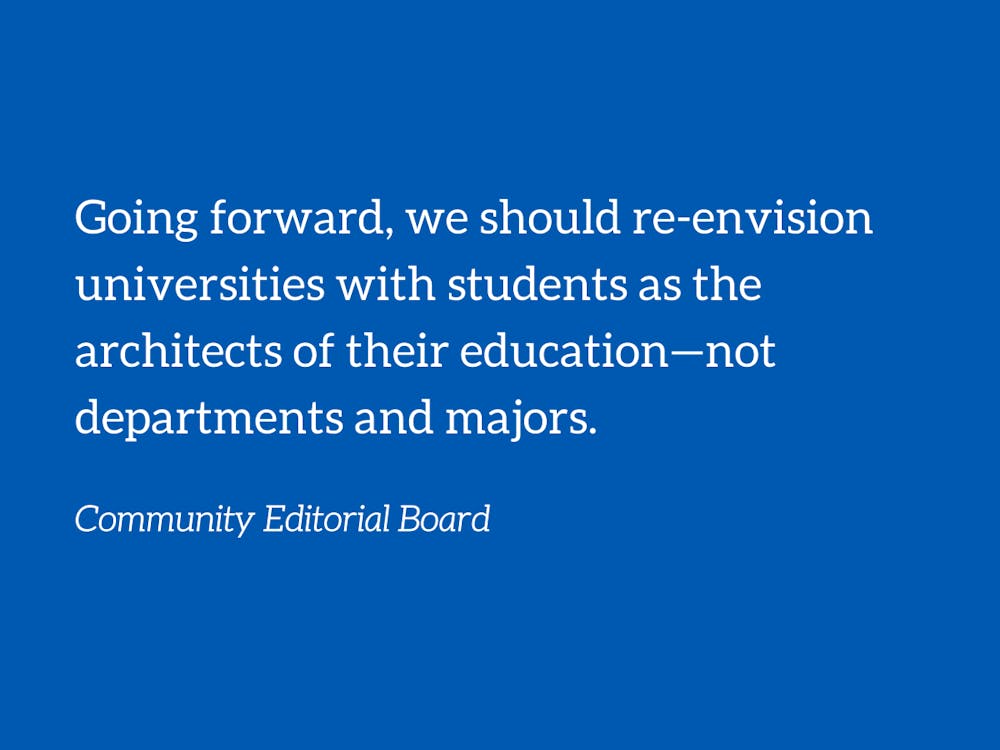When not attending maskless parties and preserving their archaic and elitist selective organizations, you’ll find most Duke students at their desks, hard at work. In the midst of this and the pandemic, many students are left wondering how to effectively spend their time here at this absurdly expensive private university.
Duke’s tuition skyrocketed from $10,000 per year in 1984 to nearly $80,000 today, adjusted for inflation. Even with approximately half of students receiving financial aid, Duke students’ debts generally continue to rise. Coupled with a lack of concern from politicians and a lack of prioritization of education by state and federal lawmakers, Duke’s astronomical price tag has many students questioning the cost. Despite these attitudes, multiple studies have concluded that college degrees remain powerful predictors of young adults’ financial success, regardless of their major.
However, it’s not good enough that a student has a college education; the rigid structure of most Duke majors has perhaps farther-reaching consequences. That being said, a liberal arts education consistently proves to be the most lucrative. Research has shown that pairing liberal arts education with just one technical skill such as data analysis, marketing, or graphic design nearly doubles one’s number of available jobs. In fact, it is often the soft skills prioritized in liberal arts such as perspective-taking, critical thinking, and cross-cultural inquiry that lead to the most monetarily successful careers—not having a supposedly higher status major.
Higher education is not merely an exchange between tuition dollars and knowledge; it is also a crucial environment of cross-demographic interactions and networks of mentors, friends, and alumni. A liberal arts education provides a host of benefits for our democracy, producing graduates that tend to be more civic-minded and resistant to authoritarianism than those with a high school education or less, as well as those with degrees from community college and technical schools.
For many of us, this is why we chose Duke. We wanted to pursue a unique passion while also receiving the countless personal and interpersonal rewards intrinsic to a liberal arts education. However, in our current educational model, where we are forced to choose from a list of majors, most of which are tethered to departments in old-fashioned disciplines such as economics and political science, there is a limit to how much students can reap these benefits. For most students, these majors insufficiently fulfill their intellectual passions and fail to promote the greatest strengths of liberal arts education—namely compassion, organization, and cultural synthesis.
Students can satisfy Duke’s “liberal arts” requirements with “Area of Knowledge” and “Methods of Inquiry” credits, which require students to dip their toes into other fields but seldom promote organic interdisciplinary inquiry. The same could be said about Duke’s cross-listing system. Even after attaching codes to courses shared between two or more departments, the ultimate objective is to keep students in their majors rather than allow them to deeply learn about their intersections.
Due to the rigidity of Duke’s major requirements, some turn to alternatives such as interdepartmental majors (IDMs) and Program II. These options successfully provide students a near-limitless scope for them to explore their academic needs but are ultimately restrained by a lack of resources, relative inaccessibility compared to traditional majors, and a campus culture that forces students into definable groups. How can students acquire the critical skills of a liberal arts education when our student body continues gripping onto selectivity processes that determine how we live, learn, and make friends? How can Program II appear viable compared to traditional majors when the entire program is run by two individuals and requires students to complete lengthy applications to even be considered?
Meanwhile, the Trinity administration and lead faculty continue to push for an incomplete version of interdisciplinary education. Instead of degrees, we funnel cross-curricular study into certificates. Last year Michael Munger, professor of political Science and director of the philosophy, politics, and economics certificate program, argued that a hypothetical PPE major would only “make a student confused in three disciplines.” Clearly, Duke wants its students to strive for interdisciplinary education, but only through the narrow paths laid out for them that conveniently reinforce existing departmental architecture.
Going forward, we should re-envision universities with students as the architects of their education—not departments and majors. Duke should reorient its undergraduate education with an emphasis on how to ground students' passions rather than simply upholding the status quo of traditional pedagogy. As professor of the practice of the program in education David Malone argued last year, “students aren’t an interruption of [faculty’s] work, they are [their] work.”
We can turn to universities such as Brown with “open curriculums,'' which retain traditional majors but prioritize ones that cut through multiple fields. At Duke, we have seen progress in this direction. Even over the past year, Trinity has proposed a new major in the marine sciences and has established a minor in inequality studies as well as a new IDM between the computer science and visual media studies departments, among others. If Duke truly values interdisciplinary education and wants to garner the benefits of a liberal arts undergraduate program, it should continue valuing students’ intellectual growth beyond its return on investment.
The Community Editorial Board is independent from the editorial staff of the Chronicle. Their column runs on alternate Mondays.
Get The Chronicle straight to your inbox
Signup for our weekly newsletter. Cancel at any time.

